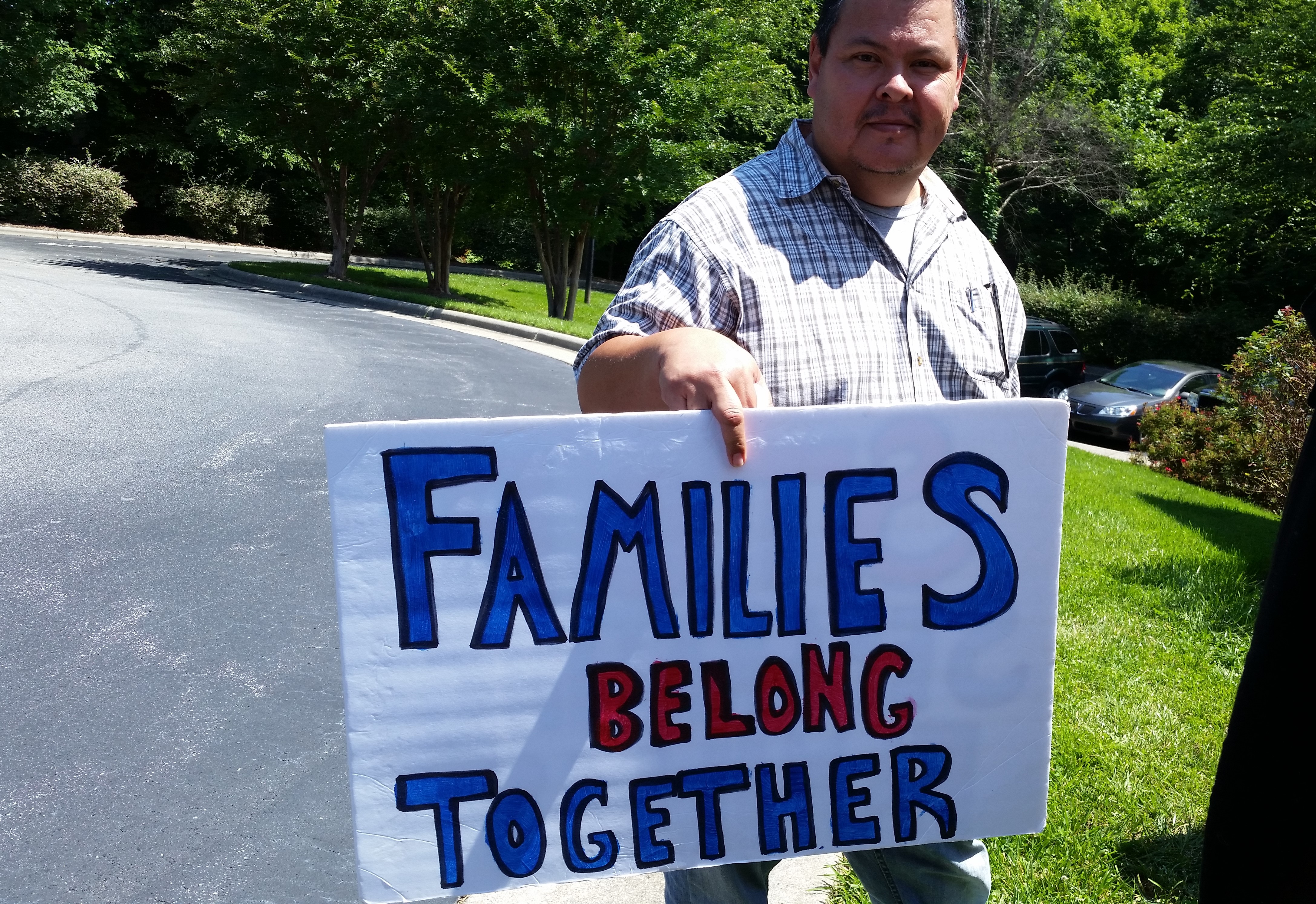
On the morning of May 31, 2017, Juana Ortega and her family and supporters, including AFSC, announced that she is taking sanctuary in a Greensboro church. Juana's is believed to be the first recent sanctuary case in North Carolina. Lisa Hitch / AFSC
Through conversations with our friends and family, in real life and on social media, many of us are trying to create more inclusive communities, to challenge racism, and to build peace. A terrific new resource from the Center for Community Change and Anat Shenker-Osario provides research-driven principles for framing issues and building compelling narratives. Drawing on their handbook, here are some questions to ask yourself to help make those conversations and Facebook posts more likely to genuinely engage people.
1. What is really at stake?
Start a conversation with shared values relating to the big picture impact of the problem instead of starting with the nitty gritty. Researchers found that framing an issue in terms of family got people to think more critically about economic justice and immigrant rights. You could also try invoking values like community, fairness, and freedom when talking about policy problems. At AFSC, our research found that audiences were more receptive to learning more about Islamophobia when the issue was framed in terms of the shared value of human rights for all.
2. Who is responsible for the problem?
Inequality and structural racism don’t just happen – they result from people’s decisions. Where possible, identify the cause of the problem and name who is behind it and their motive. This helps your audience not only to understand the problem better, but to imagine possible solutions.
In our work against Islamophobia, for example, we highlight specific policies that promote Islamophobia, including government surveillance and profiling of Muslim people. Islamophobia is not something that just happens, it is fostered and nourished by official policies, including the Trump administration’s Muslim ban.
3. Who is being targeted?
After you’ve framed the issue in terms that everyone can connect to, then you should identify the specific ways the problem harms certain individuals and groups.
If you are discussing the need for a more humane immigration process with family members who are not immigrants themselves, try leading with the shared values of fairness and human rights. You could say, “no matter where we were born, all people deserve to be treated humanely” – and your family might nod along because fair and humane treatment should apply to everybody. Then, explain why the issue matters for particular people who are being threatened with deportation and for families being held in detention or being torn apart.
4. What do you want to create instead?
This is no time to be modest or unambitious. Instead of talking about efforts to improve something slightly, or make something less harmful, describe what you want to create in its place. Instead of critiquing the immigration system as being hopelessly “broken,” say what you want the immigration system to look like: Our immigration process must include a roadmap to citizenship and humane treatment for everybody.
Check out all the great suggestions for message frames here, and try them out the next time you post an article on Facebook, send a Tweet, or sit down to dinner with friends and family who may not yet understand why issues like immigration, Islamophobia, and white supremacy should matter to us all.